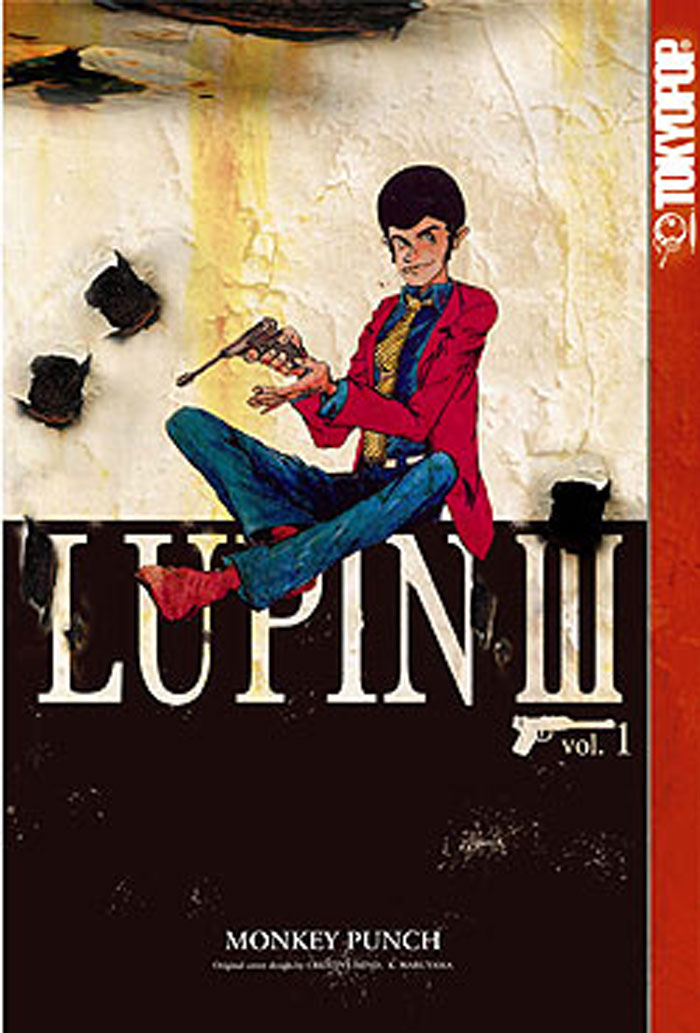
by Monkey Punch.
© Monkey Punch
To Catch a Thief?
[Review copy provided by TOKYOPOP.]
Rogue. Thief. Ladies’ man. Spy. Chauvinist. Escape artist. Jack of all trades. Man of a thousand faces.
Many identities: One master criminal with a style unlike any other.
In the 30-plus years since his debut, Lupin III (Lupin the Third) has become somewhat of a Japanese national treasure. But, except for a smattering of anime specials, he never quite made it to the United States — in his purest of forms — until now.
TOKYOPOP’s right-to-left graphic novel release of Lupin III, Vol. 1 is the first opportunity most American fans will have to experience the earliest adventures of artist and author Monkey Punch‘s most famous creation. The degree to which Western readers find his exploits entertaining may depend, in part, on what their expectations are.
If you’re looking for the kinder, gentler Lupin of the Miyazaki-directed, animated film The Castle of Cagliostro, he’s not here.
This first volume of nine, episodic stories wears its 1967 pedigree proudly, in terms of both artistic style and actual content. Monkey Punch’s finely-drawn lines and intricate backgrounds are both trippy and gritty. They perfectly match the twists and turns of each plot as it changes in tone, from jokey to dire and from elegant to crude — often on a panel-by-panel basis.
A descendent of Maurice LeBlanc’s fictional, gentleman thief, Arséne Lupin, Lupin III subscribes to a variation of Robin Hood theme: He steals from the wealthy and corrupt to give to himself. The pursuit of these riches is a high-stakes game at which he excels, much to the dismay of Inspector Zenigata, his archrival among the ranks of law enforcement. Lupin’s methods are varied, from simple cons to murder in the line of duty. He is aided and abetted by characters already familiar to anime audiences: Jigen, his loyal aide-de-camp, and the beautiful, but devious, Fujiko, his sometime rival and occasional collaborator.
Befitting the manga’s primary audience, Lupin is a man’s man of his era: the 1960s. He swears, he drinks, he smokes, and he beds multiple dames, often with a self-aware wink and a sly smile in the direction of readers. (Although, it is fair to note that — for all the rampant male-chauvinism — Fujiko is Lupin’s female equivalent … and then some.)
The wild behaviors and frequently bawdy attitudes represented by the characters of Lupin III are as much part of their time as early James Bond, the rivalry between the Pink Panther and Inspector Clouseau, go-go dancers, Laugh-In, and their modern-day counterpart, Austin Powers.
If you’re in on the joke, you’ll dig Lupin III.
More Info:
LUPIN III will be released as 14 graphic novel volumes, all available domestically from TOKYOPOP.
LUPIN III Graphic Novel, Vol. 1 © 1989 Monkey Punch. Originally published in Japan in 1989 by Chuokoron-Shinsa, Inc. English translation rights arranged with Monkey Punch through Chuokoron-Shinsa, Inc., Tokyo and Tohon Corporation, Tokyo. English text © 2002 by TOKYOPOP, an imprint of Mixx Entertainment, Inc. Images used with permission.